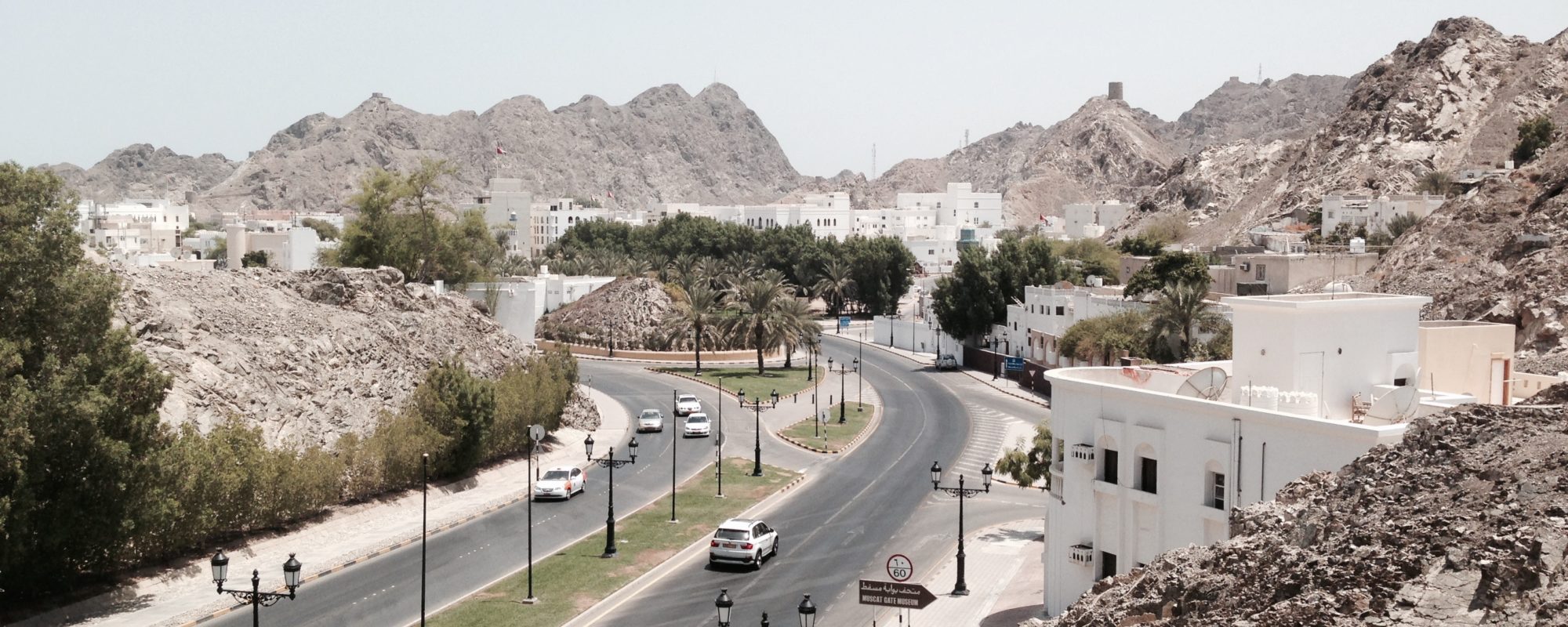 ABOUT THE AUTHOR: The Sultanate of Oman’s economy is driven by oil, but seafaring has always been the original industry: at its peak, the Omani trade empire spanned the Persian Gulf, southern Iran, Pakistan, and East Africa. Today, Oman is in the process of re-asserting its maritime prowess in the realm of diplomacy, trade, and security, with an increasing number of partnerships with Indian Ocean rim countries, world-class port developments, and a strong regional naval and air presence. Since 1970, Oman has developed rapidly and emerged as a modern state dedicated to peace and prosperity in an otherwise tumultuous region, drawing heavily on its long history of trade, moderation, and mediation for guidance.
ABOUT THE AUTHOR: The Sultanate of Oman’s economy is driven by oil, but seafaring has always been the original industry: at its peak, the Omani trade empire spanned the Persian Gulf, southern Iran, Pakistan, and East Africa. Today, Oman is in the process of re-asserting its maritime prowess in the realm of diplomacy, trade, and security, with an increasing number of partnerships with Indian Ocean rim countries, world-class port developments, and a strong regional naval and air presence. Since 1970, Oman has developed rapidly and emerged as a modern state dedicated to peace and prosperity in an otherwise tumultuous region, drawing heavily on its long history of trade, moderation, and mediation for guidance.
During his fellowship, Scott will be exploring the cultural legacies of this maritime past and how they shape and inform the country’s future. From the capital city of Muscat, the historic ports of Oman’s coast, and villages of its interior, Scott will share stories of a nation occupying a liminal space between past and future and between continents. Dispatches will cover topics ranging from Oman’s role in the global shipping industry, cultural diplomacy and soft power, the Indian Ocean’s influence on food, art, and culture, and everywhere in between.
“In their behavior, both among themselves as well as with strangers, the Omanis are very polite, friendly, generous and obliging. They love virtue and bravery”
–Robert Padbrugge, Dutch East Indies Company, 1672
“Our country in the past was famous and strong. If we work in unity and cooperation, we will regenerate that glorious past”
–Sultan Qaboos bin Said on the first day of his reign, 1970
MUSCAT, Oman–As I drove along Sultan Qaboos highway last Thursday, a large low flying airplane caught my eye. It wasn’t on the usual flight path, which I’ve come to know well living so close to the airport, and it was enormous — most flights in and out of Muscat are smaller, short-haul aircraft. It was a white 747 with red and green stripes: the livery of the Sultan’s private airplane.
I turned on the radio to see if there was any chatter about the Sultan leaving for an official visit of some kind, but heard nothing and chalked it up to a routine test-flight or photo op. Later in the day, however, I heard of two possible reasons the jet may have been dusted off: that the Syrian Foreign Minister took a side trip to Muscat from Tehran, or that French hostage Isabelle Prime was released to Oman from Yemen. These theories, both entirely plausible, are a reminder of Oman’s long-standing role in mediation and negotiation with the region’s many malcontents, and exemplary of its recent streak of diplomatic success (It was in Oman where some of the early face-to-face talks between US and Iranian officials took place, which ultimately led to the just-completed agreement over Iran’s nuclear program).
When I was last in Oman in 2009, His Majesty Sultan Qaboos bin Said (hereafter, His Majesty, to conform with local standards of respectful address) had just returned from a visit to Tehran, where he met with Ayatollah Ali Khamenei and the then newly reelected President Mahmoud Ahmadinejad. I had chosen to study Arabic in Oman on a whim — while Jordan, Egypt, and Morocco were interesting in their own right, I knew nothing about Oman, and found limited or hyper-specialized scholarship on the country (on, say, sea turtle nesting). On a map, the Sultanate appears to be much closer to South Asia and the Horn of Africa than the “heart” of the Arab world in the Levant and North Africa, and this notion was compelling to me. That the country’s leader was visiting Iran at the height of US outrage over Ahmadinejad made it all the more interesting.
Although it was His Majesty’s first visit to Iran since the 1979 revolution, contemporary Iran-Oman diplomatic relations have remained unbroken from the period of the Shah through the Revolution, the Iran-Iraq war, two US wars in Iraq, and the on-going carnage in Syria. Other Arab capitals have seen their relationship with Tehran rattled by these events. Indeed, since the Bronze Age, coastal Iran and Oman have intermittently exchanged goods, blood, and land, and this brotherly historical relationship is one that they call upon frequently in discussing their bond. Both Omani and Iranian press had wall-to-wall coverage of the 2009 visit, and its stated goal was the vague but ubiquitous “strengthening bilateral ties.”
A lot has changed here in Oman since 2009: there are more roads and traffic lights, more shopping malls, bigger and more beautiful mosques. Entire neighborhoods have materialized on what was once the fringe of Muscat, and a shiny new airport with jetbridges instead of stairways is nearing completion. The US’s pending détente with Iran is the buzz around town, and with good reason. Recently, Ayatollah Khamenei recounted a “short history” of the US-Iranian nuclear talks in a Ramadan speech to government officials, and revealed that His Majesty’s visit to Tehran wasn’t just about bilateral ties with Oman.[i] In the speech, the Ayatollah refers to him as “one of the honorable personalities of the region,” and an “honorable intermediary,” and claimed that his visit was in part to deliver a message of reconciliation from the American president. He continued:
I said to that honorable intermediary that we do not trust the Americans and their statements. He said, “try it once more” and we said, “very well”… This was how negotiations with the Americans began (translation by the Center for Preserving and Publishing the Works of Grand Ayatollah Sayyid Ali Khamenei)
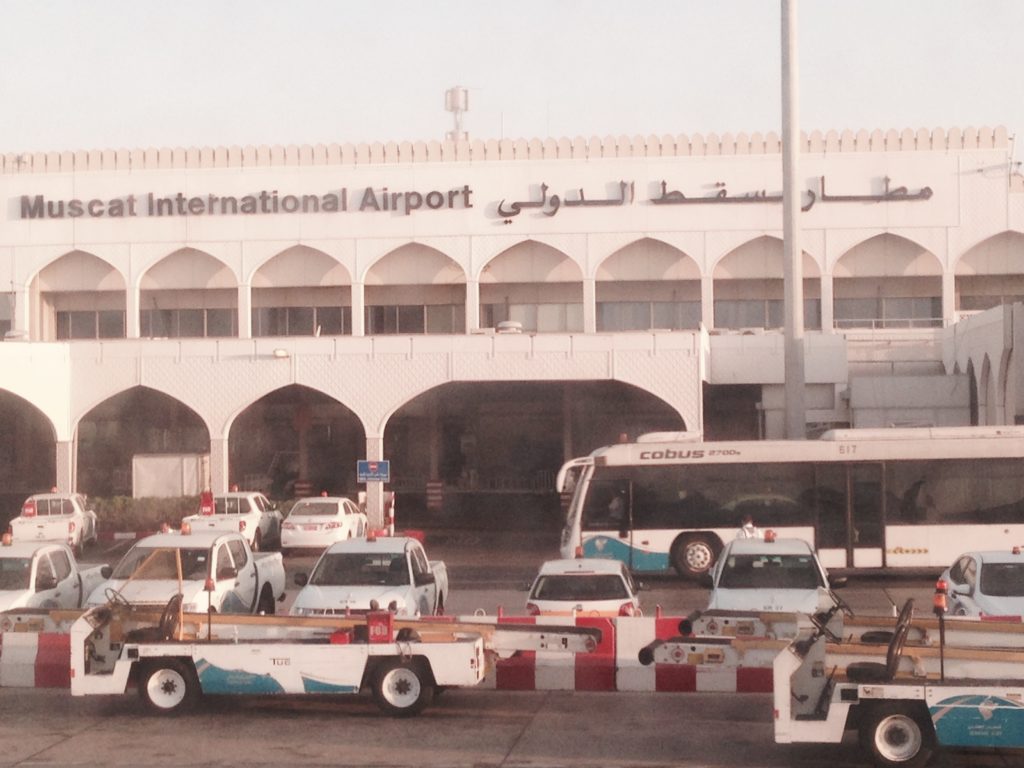
The following year, three years before the closed-door talks between the US and Iran started, the Ayatollah seemed to already be taking His Majesty’s advice when Sarah Shourd, the American hiker held in Iran’s Evin Prison along with her partner Shane Bauer and friend Josh Fattal, was released in 2010. It is widely believed that His Majesty paid a $500,000 bail to the Iranians, although the revolutionary authorities have insisted that Shourd was released on humanitarian grounds because of an undiagnosed lump on her breast. Nevertheless, she was flown from Tehran to Muscat on an Omani private jet and met on the tarmac by her family and diplomats from the US and Oman. Just three weeks later, I had the chance to meet her at the Sultan Qaboos Cultural Center’s annual conference in Washington, DC, where I was working.
The purpose of the conference was to celebrate 40 years of His Majesty’s reign: to reflect on the rapid development of the country since 1970, and to bring experts together to discuss different ways Oman could build on and sustain this progress. The celebration was fitting and refined, but the mood became electric when Ms. Shourd arrived. Ministers, diplomats, professors, and cultural representatives who had come in from Oman beamed with pride at their country’s role in her freedom, and then-Undersecretary of State William Burns lauded His Majesty’s leadership in an opening plenary. It was like Oman burst onto the world stage of diplomacy, and the nervous excitement that comes along with being on stage was palpable.
If the release of Ms. Shourd inaugurated a new public reputation for Oman as peacemaker and powerbroker, they seemed ready to carry the mantle with a series of high profile decisions in the subsequent years. In 2011, when the Gulf Cooperation Council (GCC) sent ground forces and police to Bahrain to quell Arab Spring-inspired unrest, Oman opted out of the operation. In 2013, Muscat gave paid asylum to Hannibal Qaddafi and other members of the Qaddafi family, who had been forced out of both Libya and Algeria. When Saudi Arabia, the UAE, and Bahrain all withdrew their ambassadors from Qatar in 2014 as a result of Doha’s support of the Muslim Brotherhood in Egypt, Oman refused to fall in line and instead kept their diplomatic line with Qatar unbroken (after all, Oman was one of the only countries to not break diplomatic ties with either Saddam Hussein or Muammar al Qaddafi in their darkest hours — so to pull an ambassador over a minor spat seemed unlikely).
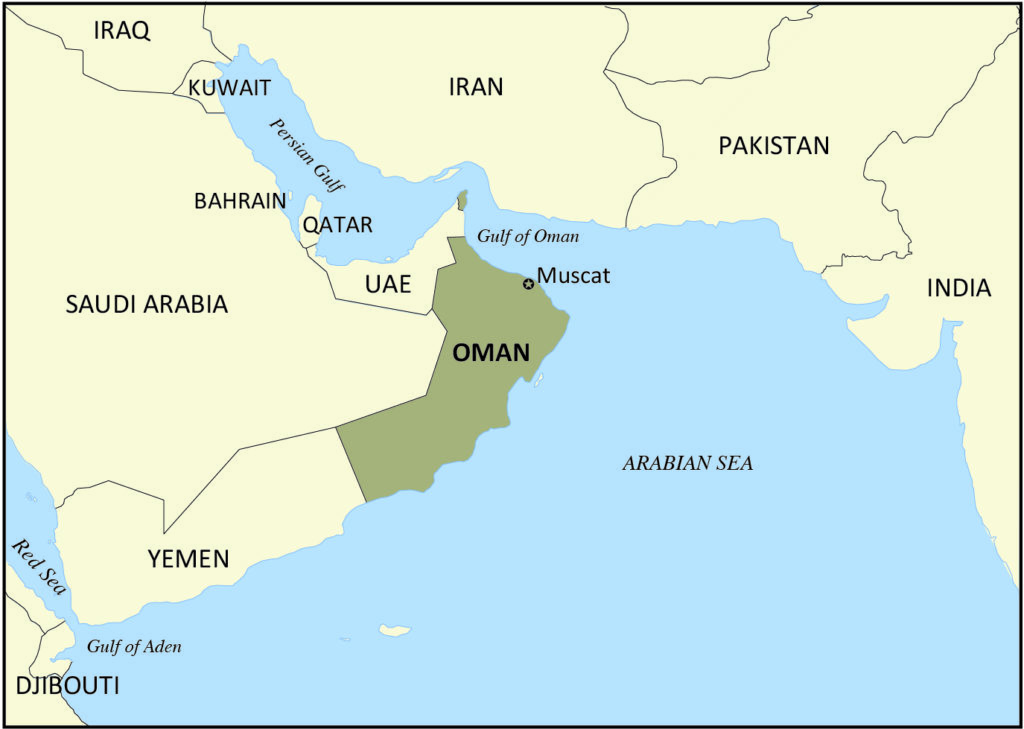
In 2015 alone, Oman accepted ten Yemeni detainees from the Guantanamo Bay Detention Camp, the most of any country to receive prisoners this year. Furthermore, Oman has not joined the Arab military coalition against ISIS except for moral and undisclosed financial support, and is the only GCC member not taking part in the current ground and air campaign against the Houthis in Yemen in any way, including financially. Several tribes straddle the Oman-Yemen border, and Omanis often refer to Yemenis as being “like cousins” who share language, blood, and tradition. This history is often brought up when justifying their non-participation in Yemen’s many travails.
A seemingly constant problem in Yemen are kidnappings, which predate the current conflict, and have long been a profitable industry for tribes which extort sizeable ransoms from European companies in order to release of their employees. In recent years, however, Oman seems to have opened up a diplomatic channel that may break the cycle. In 2011, three French hostages held by Yemen’s Al Qaeda in the Arabian Peninsula (AQAP) were released to Oman, and both the French and Omani government denied ransoms were paid. A story that ran in the Emirati newspaper The National, detailed His Majesty’s involvement and an Omani tribal figure’s heroic negotiation and smuggling by car into Oman. In 2013, another successful negotiation saw a Finnish couple and an Austrian held by AQAP handed over to Omani authorities. This June, Oman secured the release of U.S. journalist Casey Coombs and a Singaporean citizen detained by the Houthis, and just last week French aid worker Isabelle Prime was flown to Oman after her release from captivity by unspecified captors assumed to be sympathetic to AQAP.
Details are still emerging about the negotiations surrounding Ms. Prime’s release, but the government of Oman’s negotiating power with Yemen’s many factions is evident, whether or not ransoms are involved. At the very least, Mr. Coomb’s case appears to have been clever diplomatic maneuvering; he was released on the same day that the Omani government flew a Houthi delegation to Muscat by private jet in order negotiate directly with U.S. officials to peacefully resolve the Houthi-Saudi conflict. The fates of all those former hostages who at last stepped onto the tarmac in Muscat are surely preferable to those still stranded in Syria, Iraq, or elsewhere, as evidenced by the grisly spectacles released by ISIS and AQAP.
Lest Oman’s government be pigeonholed into only negotiating wrongful imprisonment and hostage situations, they have recently begun actively working to resolve some of the toughest state-level conflicts of the region. This spring, Yusuf bin Alawi, Oman’s Minister Responsible for Foreign Affairs, presented a seven point plan called the “Omani Initiative” to the governments of Saudi Arabia and Iran in an effort to put an end to the violence taking place in Yemen following the Houthi takeover. The initiative emphasizes reconciliation and acceptance, and calls for the temporary reinstatement of ousted President Hadi, early elections, legitimate political recognition for the Houthis, and admission of Yemen into the GCC. While it’s unlikely Riyadh or Tehran will accept the proposal right away, bold and optimistic plans such as Alawi’s might be a first-step toward ending the conflict, serving to at least introduce an alternative to the “winner take all” approach now on offer.
Alawi and other Omani government officials have such regular contacts with the regional powers in conflict that Muscat has become a revolving door of diplomacy and message delivering. Iranian President Hassan Rouhani visited Oman in March 2014 to much fanfare (it was his first and only visit to an Arab state to date), and Iranian Foreign Minister Mohammad Javad Zarif visited Muscat in April, May, and June of this year alone. Both Hillary Clinton and John Kerry made official visits to the Sultanate during their tenures as Secretary of State, and a steady stream of officials from the GCC, China, and India flow into Muscat throughout the year.
It should come as no surprise, then, that a delegation from perpetually embattled Syria came through the revolving door this month, when Bashar al Assad’s Foreign Minister Walid al Moallem took a detour to Muscat after an official visit to Tehran. It was al Moallem’s first visit to a Gulf country since war broke out in Syria in 2011, and is widely seen as a sign that Assad’s government might be open to diplomacy. As more voices in the U.S media predict no end to the conflict in Syria without the willingness of the Syrian government, Oman’s red carpet treatment of a representative of Bashar al Assad — which might have looked apologist a year ago — seems prescient.
But how does Oman manage to quietly walk the tightrope between Saudi Arabia, the U.S., and Iran, between regime and revolutionary, and between East and West so gracefully? Part of the answer lies in its long-term policy of strategic abstention from joint regional operations and its willingness to cast dissenting votes and voice unpopular but brave opinions. For example, in 1994 Oman became the first Arab Gulf country to publicly acknowledge Israel when Prime Minister Yitzchak Rabin was welcomed to Muscat at the invitation of His Majesty. Yusuf bin Alawi flew to Jerusalem the following year after Rabin’s death, and Prime Minister Shimon Peres visited Oman in 1996 to inaugurate a diplomatic-trade mission. While the mission has since closed its doors, Oman’s willingness to welcome one of the region’s perpetual pariahs in order to promote peace and international cooperation was bold.
Oman has never been a member of OPEC or OAPEC (the Organization of Arab Petroleum Exporting Countries), although oil and gas make up almost 90 percent of government revenue. Although it has been a member of the GCC since its inception, it has dissented on a number of votes and opted out of participation in key military campaigns (including the important aforementioned Bahrain 2011 and Yemen 2014 interventions). The Sultanate has also consistently been an outspoken dissenting voice concerning proposals that would unite the Gulf with a single currency, and bind the GCC more militarily.
Yusuf bin Alawi has called Oman “a nation of peace,” which sounds similar to the often over-repeated “religion of peace” trope about Islam. In Oman’s case, though, what sounds like a cliché is a matter of policy. In a widely shared after the Syrian Foreign Minister’s visit, Omani scholar and professor at Sultan Qaboos University Haider al Lawati predicted a breakthrough in Syria and elsewhere and hailed Oman’s many diplomatic victories, saying “the essence of Omani policy is to support peace and security and to reject conflict…”
“Muscat is a banner for good and openness, for coexistence and peace,” al Lawati wrote, “and has distanced itself from discord of all kinds, has not gotten involved in the destruction of nations and displacement of peoples, and does not support extremism and terrorism.” Oman’s acute aversion to conflict, “destruction,” “displacement,” and “terrorism” afford it the ability to be taken seriously when it calls itself a “nation of peace.” Afghanistan’s former ambassador to Muscat Azim Nasser-Zia recently told the Times of Oman that Oman is like “God’s gift” to Western countries.
“Switzerland of the Middle East” is another appellation tossed around for Oman, but it’s a phrase that connotes passive neutrality and a lack of choice in the matter. Oman’s foreign policy of active non-involvement is guided by what its officials believe is virtuous, a choice it has made without the influence of external pressure. Unlike Switzerland, regional powers did not agree on and impose neutrality on Oman — both Saudi Arabia and Iran would rather claim it as a client state. We expect small nations like the Sultanate to fall in line with one of these titans: Saudi Arabia’s population is seven times that of Oman, and its gross domestic product is ten times as large, whereas Iran’s population is ten times that of Oman, and it’s GDP five times as large. Instead of choosing one power to align with financially and ideologically, Oman has done just the opposite, charting its own lonely path to prosperity without being beholden to any authority but itself.
Joseph Kechichian, a scholar at the Middle East Institute and author of Oman and the World: The Emergence of an Independent Foreign Policy, recently told France 24 “Oman is not a neutral country but one that always wished to make itself an arbiter, a society that banked on its high tolerance levels in socio-political affairs” (emphasis mine). Neutrality and not taking sides would most certainly the easier option for a country as small as Oman. But far from “standing for nothing, falling for everything,” Oman’s self-exemption from international pressure in diplomacy, security, and economics in the name of has allowed it to achieve the “great mediator” and arbiter role it has striven for.
Another contributing factor to Muscat’s ability to walk the tightrope between seemingly conflicting powers and ideologies is its religion. First, a brief (and by no means comprehensive) background in early Islamic history: after the death of the Prophet Muhammad, early Muslims were divided on who should rightfully be declared as caliph and lead the fledgling Islamic community into a new era. Some believed that Abu Bakr, the Prophet’s close confidant and father-in-law should be caliph, while others believed that ‘Ali, Muhammad’s cousin and son-in-law should lead. Those who supported Abu Bakr became what are now Sunnis, and those who supported ‘Ali (and thus hereditary authority) became Shia.
A third group, at that time called the khawarij or “those who went out,” sprouted up in Iraq and were an offshoot of the forces that initially supported ‘Ali. In the first century after the death of the Prophet, two religious leaders in Basra, Jabir bin Zaid and Abdullah bin Ibadh cultivated a community of followers who rejected hereditary succession in favor of consensus-based system, where representatives from different families and tribes unanimously select a leader, or imam. This group became known as Ibadhis, and eventually migrated to birthplace of one of its first leaders: Oman. While there are small minority populations of Ibadhi Muslims in Tunisia, Libya, and coastal Tanzania, Oman is the only Ibadhi-majority country in the world. Consistent with the dissenting stance taken in the early Islamic period, Ibadhism is neither Sunni nor Shia, although it is almost indistinguishable from Sunni Islam from an outside perspective.
While it would be reductionist to proscribe all conflicts in the Middle East as grudges from early Islamic infighting, Iran and its Shia proxies and Saudi Arabia and its Sunni proxies have been clashing on dozens of battlefields across the Middle East for the better part of the past two centuries. And this is precisely where Oman comes in; as neither Sunni nor Shia, Oman and its leaders can occupy the very thin space between the two vying sects. When news outlets mention Oman, they often oversimplify the history, theology, and geopolitics the region by saying that Ibadhism is the reason Oman can walk the diplomatic tightrope. Indeed, Oman has yet to part of any of the tangled web of Sunni-Shia proxy wars that have torn apart the Levant, Yemen, and Persian Gulf. Whether their absence from these wars is purely religious is undeterminable, but the history of Ibadhism makes for a convenient ideological underpinning for continued self-exemption from such conflicts.
More than religious history, Oman’s storied trade history also helps explain its foreign policy. Before the modern states of Iran and Saudi Arabia existed, before the Houthis and the GCC, before the U.S.’s strategic interests, there were Portuguese, British, and French colonists. And before the European powers, there were the Mughal Emperors, Ming Dynasty, and the Ottomans. Last week, when the heat index reached a suffocating 126 degrees, I visited the air-conditioned Bait al Baranda museum, housed in the former American mission building in Old Muscat. The museum primarily covers the history of Oman during the early modern and modern periods of European interaction. The exhibits reminded me of the longstanding diplomatic role Oman has played with major world powers at their apexes in history.
The al Busaidi dynasty, which His Majesty belongs to, has been practicing trade, diplomacy, and strategic politicking for centuries. Sailors from all over Europe visited the port of Muscat, starting with Vasco de Gamma in the mid-fifteenth century. The predecessors to the al Busaidis, themselves fiercely independent, expelled the Portuguese from Oman in 1650, and set their sights on other Portuguese colonies in the Indian Ocean like Mombasa and Gwadar, which they eventually conquered. When the British and French arrived on Oman’s shores, the al Busaidi sultans navigated their competing interests to placate them both and remain independent and uncolonized. In 1840, the Sultanate was the first Arab country to send an envoy to the United States, led by Sultan Said bin Sultan’s court secretary Ahmad bin Na‘aman, who sailed around the Horn of Africa and across the Atlantic to Brooklyn. Moreover, under the al Busaidi, Oman acquired several more of the major ports of the Indian Ocean and Persian Gulf, including Kilwa, Mogadishu, and Zanzibar in East Africa, Hormuz and Bandar Abbas in Iran, and the island of Bahrain, and had control several smaller ports of call in between. The dynasty only ceded the ports of Gwadar and Zanzibar in 1958 and 1964 respectively.
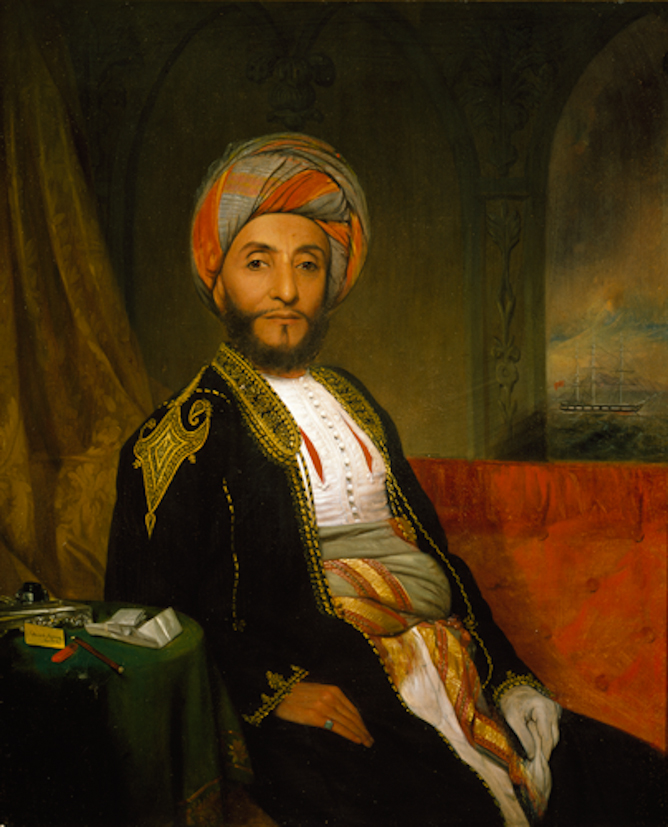
All this is to say that Omanis have been interacting with people who looked, sounded, and worshipped differently from them for centuries. However, the loss of Gwadar and Zanzibar and a series of unfortunate policy choices by His Majesty’s father threatened to derail Oman’s long history of tolerance, trade, and diplomacy. In 1969, the year before His Majesty came to power, the golden age of Oman seemed to be over: the country was embroiled in civil war, just 20 years removed from a previous war, there was just one (understaffed) hospital, and only ten kilometers of paved road. Eyeglasses and personal radios were outlawed for the general public, and the standard of living far below its neighbors. Upon his ascension to the throne, His Majesty called upon all Omanis to work together “to regenerate [their] glorious past” of brave dissention like their Ibadhi forefathers, of hospitality to visitors from across the world, and of doing that which is virtuous and brave.
Children and grandchildren of Omani sailors who spoke Swahili, Baluchi, Gujarati and Persian in various ports-of-call are now refashioning Oman’s maritime past into a new future as cultural chameleons in business, education, and above all, diplomacy. In a 2010 UNDP Report, Oman was ranked number one in the Human Development Index for fastest improvement since 1970 — a remarkable achievement considering how the entire world has developed even in just the last 20 years. From the 1950s until the early 2000s, the government of Oman was focused inwards, on developing nationwide infrastructure, access to education, and public health. It seems as though the UNDP report closed the first chapter on Oman’s history since His Majesty’s ascension, an era that is called an-nahda al-mubaraka, or “the blessed renaissance” here. We are in the next chapter of Oman’s history now, an era dedicated to the advancement of peace, cooperation, and rationalism in foreign policy, which began with His Majesty gently urging Ayatollah Khamenei to try trusting the Americans “once more.”
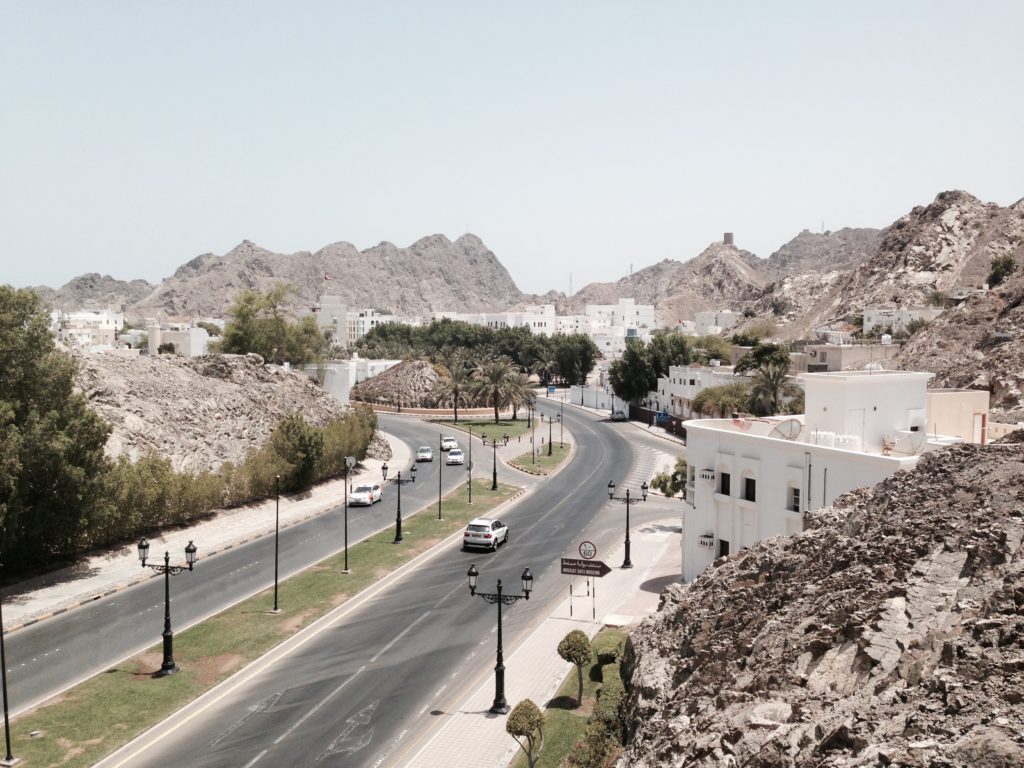
[i] I first learned of this speech from an excellent article by Laura Rozen in Al Monitor, http://www.al-monitor.com/pulse/originals/2015/08/iran-us-nuclear-khamenei-salehi-jcpoa-diplomacy.html

